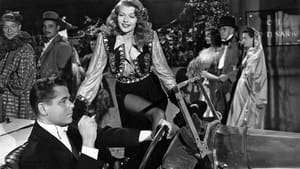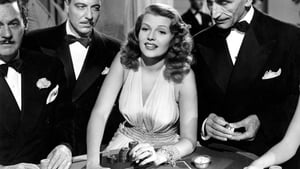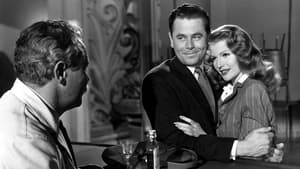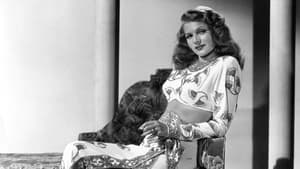Contact: [email protected]
Video Sources 0 Views
- Watch trailer
- Gilda

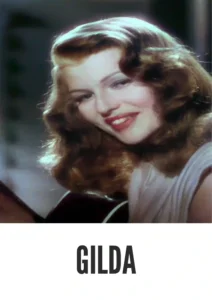
Synopsis
Table of Contents
ToggleReview: Gilda (1946) – A Seductive Noir Classic

Introduction
Gilda, released in 1946, is a captivating film noir directed by Charles Vidor that epitomizes the allure of the genre. Renowned for its sultry atmosphere, complex characters, and unforgettable performances, this classic film continues to mesmerize audiences with its timeless exploration of love, betrayal, and redemption. In this review, we’ll delve into the seductive world of Gilda and examine its enduring legacy in the realm of cinema.
Check The Full Colorized Movies List
Check Our Colorized Movies Trailer Channel
Understanding Gilda (1946): Director, Cast, and Genre
Directed by Charles Vidor, Gilda boasts an exceptional cast led by Rita Hayworth, Glenn Ford, and George Macready. The film is a quintessential example of the film noir genre, characterized by its moody lighting, morally ambiguous characters, and atmospheric storytelling.
Exploring the World of Gilda (1946): Plot and Characters
Gilda unfolds in the smoky underworld of post-World War II Buenos Aires, where the enigmatic Gilda, played by Rita Hayworth, finds herself entangled in a web of deceit and desire. As tensions rise between her husband, Ballin Mundson, and her former flame, Johnny Farrell, Gilda becomes a pawn in their dangerous game of power and manipulation. As the plot twists and turns, secrets are revealed, and loyalties are tested, leading to a climactic showdown that will leave viewers on the edge of their seats.
The Art of Film Colorization
While Gilda was originally filmed in black and white, its early colorized version adds a new layer of depth to its sumptuous visuals. The colorization process enhances the film’s glamorous atmosphere and captures the allure of its iconic star, Rita Hayworth, with breathtaking clarity.
Early Colored Films: A Brief History
The history of early colored films is marked by innovation and experimentation as filmmakers sought to enhance the visual appeal of their movies. From hand-tinted frames to pioneering technicolor processes, the evolution of colorization techniques transformed the cinematic landscape, offering audiences a new way to experience the glamour and allure of Hollywood.
Gilda (1946) and Its Early Colored Version
The decision to release Gilda in a colorized format was made with the intention of immersing audiences in the film’s glamorous world and enhancing its visual impact. While some purists may prefer the original black and white version, the early colorized edition of Gilda adds a new layer of depth to its sumptuous visuals and captures the timeless allure of its iconic star, Rita Hayworth, with stunning clarity.
The Debate Over Film Colorization
The debate over film colorization continues to divide audiences and industry professionals alike. While some argue that colorization breathes new life into classic films and makes them more accessible to modern audiences, others maintain that it compromises the artistic integrity of the original work. As technology advances and filmmaking techniques evolve, the debate over colorization remains a topic of ongoing discussion within the film community.
Examining Gilda (1946) as an Early Colored Film
Viewing Gilda in its early colorized iteration offers audiences a fresh perspective on its glamorous visuals and seductive atmosphere. The colorization process enhances the film’s sumptuous cinematography and captures the allure of its iconic star, Rita Hayworth, with breathtaking clarity. As viewers are drawn into the glamorous world of Gilda and her tumultuous relationships, they are treated to a visual feast that immerses them in the timeless allure of classic Hollywood.
Influence and Legacy: Gilda (1946)’s Impact on Cinema
Gilda is widely regarded as a masterpiece of the film noir genre that continues to captivate audiences with its glamorous visuals, complex characters, and seductive atmosphere. Its exploration of themes such as love, betrayal, and redemption resonates with viewers of all ages, making it a timeless classic that continues to influence filmmakers and inspire new generations of cinephiles.
Director’s Cinematic Legacy: Beyond Gilda (1946)
Charles Vidor’s directorial legacy extends far beyond Gilda, encompassing a diverse body of work that includes acclaimed films such as Cover Girl and A Song to Remember. As one of the most respected filmmakers of his generation, Vidor was known for his ability to craft visually stunning films that captured the essence of classic Hollywood glamour with depth and nuance. Gilda stands as a testament to his talent and creativity, solidifying his reputation as one of the great auteurs of classic Hollywood cinema.
Themes Explored in Gilda (1946)
At its core, Gilda explores themes of love, betrayal, and redemption in the glamorous world of post-World War II Buenos Aires. Through its seductive atmosphere and morally ambiguous characters, the film offers a nuanced portrayal of the human condition, challenging viewers to confront their own desires and motivations as they navigate the complex relationships at the heart of the story.
Reception and Controversy Surrounding Gilda (1946)
Upon its release, Gilda received widespread critical acclaim for its glamorous visuals, seductive atmosphere, and powerhouse performances, particularly from Rita Hayworth in the title role. While the decision to release the film in a colorized format sparked debate among purists, its enduring popularity has cemented its status as a timeless classic of the film noir genre.
Where to Watch Gilda (1946) Online
For those eager to experience Gilda for themselves, the film is readily available on popular streaming platforms such as Amazon Prime Video, Google Play Movies, and iTunes. Whether viewed in its original black and white format or its early colorized iteration, Gilda offers a cinematic experience that is both glamorous and visually stunning.
FAQs About Gilda (1946)
1. Is Gilda based on a true story?
No, Gilda is a fictional film that explores the glamorous world of post-World War II Buenos Aires through the eyes of its enigmatic title character. While the film’s storyline may draw inspiration from real-life events, its characters and plot are works of fiction.
2. Who starred in Gilda?
Gilda stars Rita Hayworth in the title role, delivering a mesmerizing performance that has become synonymous with the glamour and allure of classic Hollywood. She is supported by a talented ensemble cast, including Glenn Ford and George Macready, who bring depth and nuance to their respective roles.
3. What is the central message of Gilda?
At its core, Gilda explores themes of love, betrayal, and redemption in the glamorous world of post-World War II Buenos Aires. Through its seductive atmosphere and morally complex characters, the film offers a nuanced portrayal of the human condition, challenging viewers to confront their own desires and motivations as they navigate the complex relationships at the heart of the story.
4. Why was Gilda released in a colorized format?
The decision to release Gilda in a colorized format was made with the intention of immersing audiences in the film’s glamorous world and enhancing its visual impact. While some purists may prefer the original black and white version, the early colorized edition of Gilda adds a new layer of depth to its sumptuous visuals and captures the timeless allure of its iconic star, Rita Hayworth, with stunning clarity.
5. What is the legacy of Gilda?
Gilda is widely regarded as a masterpiece of the film noir genre that continues to captivate audiences with its glamorous visuals, complex characters, and seductive atmosphere. Its exploration of themes such as love, betrayal, and redemption resonates with viewers of all ages, making it a timeless classic that continues to influence filmmakers and inspire new generations of cinephiles.
6. Are there any sequels or remakes of Gilda?
No, there have been no official sequels or remakes of Gilda. However, the film’s enduring popularity has inspired countless reinterpretations and homages in various media. Nonetheless, none have captured the glamorous visuals and seductive atmosphere of the original 1946 classic.
7. Where can I watch Gilda online?
For those eager to experience Gilda for themselves, the film is readily available on popular streaming platforms such as Amazon Prime Video, Google Play Movies, and iTunes. Whether viewed in its original black and white format or its early colorized iteration, Gilda offers a cinematic experience that is both glamorous and visually stunning.
Conclusion
In conclusion, Gilda (1946) stands as a timeless classic of the film noir genre that continues to captivate audiences with its glamorous visuals, complex characters, and seductive atmosphere. Whether viewed in its original black and white format or its early colorized iteration, Charles Vidor’s insightful direction and the mesmerizing performances of the cast offer a cinematic experience that is both gripping and visually stunning. As viewers are drawn into the glamorous world of post-World War II Buenos Aires, they are treated to a visceral journey that challenges their beliefs about love, betrayal, and redemption and leaves a lasting impact on their understanding of the human condition. Gilda remains a timeless classic that continues to enthrall and inspire audiences around the world.
